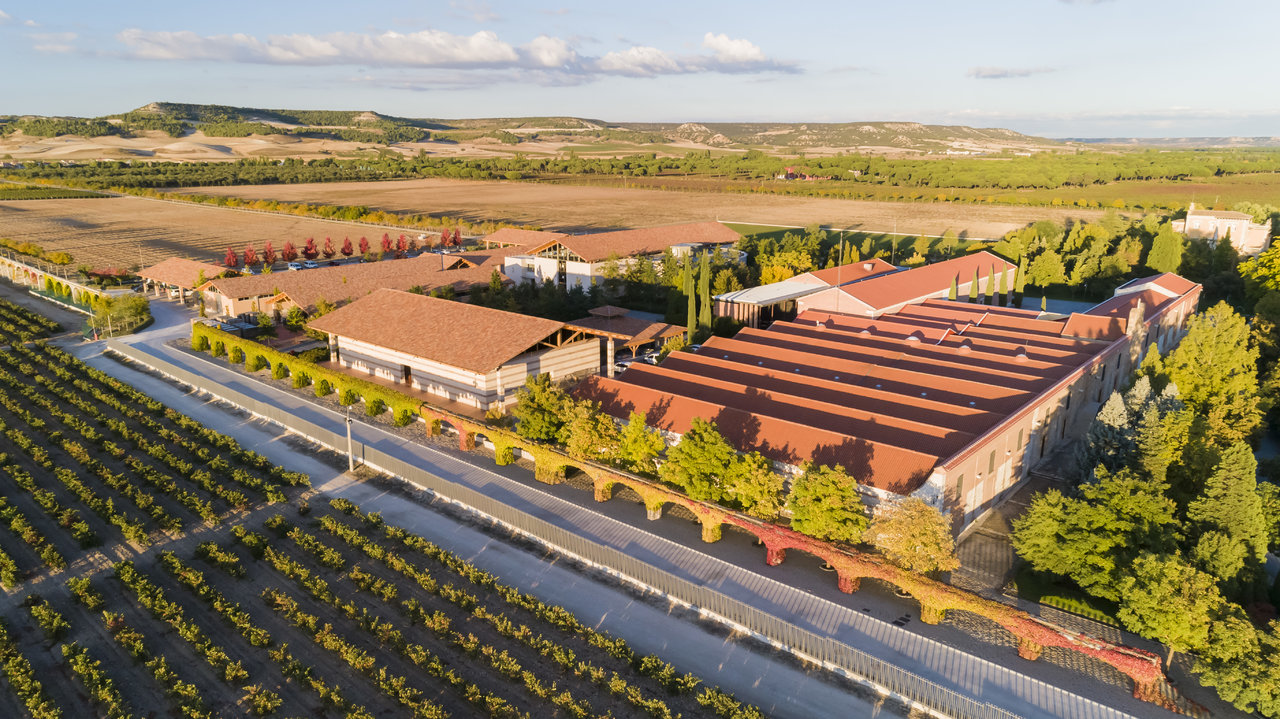I had the pleasure over the weekend of helping to facilitate a vertical tasting of one of Spain’s most famous and collectible wines: Vega Sicilia Unico. It is a rare thing to taste even a handful of Unico vintages at once, and all but unheard-of to attempt to parse 35 vintages in one sitting, which was our daunting task (life is tough, I know). Pablo Alvarez Mezquíriz, the CEO of Vega Sicilia and part of the family who has owned the estate since 1982 (not to mention the guest of honor at our vertical dinner), said that only twice since his family purchased Vega Sicilia had he seen more vintages of Unico in one place. Not bad for an odd Saturday night in October.
In addition to stressing one’s palate to the limit, vertical dinners of this sort serve at least two important purposes. The first is rather obvious: the opportunity to compare and contrast the individual wines in the lineup, interrogating the vagaries of vintage and winemaker style, or the mark of time’s slow march on what was once fresh grape juice. The second is less discussed but arguably just as important, if not more: the impression of a winery’s body of work as a whole, a living (or in some unfortunate cases, dead) testament to decades or even centuries of dedication to the craft of winemaking.
“Six Decades of Vega Sicilia” was the promise of the evening, and it delivered in true form, with vintages of Unico from 1953 to 2010, mostly out of 750ml bottles, a true test of age-worthiness. Rather than wax eloquent with gratuitous tasting notes from every vintage, below are a few lessons from the evening that I am still pondering.
Consistency Is King
Apart from a slight departure from form in the 1990s (the 1990 vintage showed an uncharacteristic level of Brettanomyces, and the 1995 was prematurely oxidized), and a very normal incidence of TCA (one thoroughly corked bottle and one borderline case that sparked a friendly debate), the consistency of the wines was breathtaking. Try showing 35 vintages of a top white Burgundy producer and you will be dazzled by a range of colors from pale straw to deep gold, or crack open 35 vintages of First Growth Bordeaux, and the wet harvests like 1993 or 2001 will stick out like sore thumbs. Not so for Vega Sicilia’s tête de cuvée. Without ever lacking individual character, each vintage was a study in consistency, with an attention to detail and quality of fruit that almost never varied. Ask this of Bordeaux, and you are likely to be disappointed. Ask this of Burgundy and you may be missing a few screws.
The Virtue of Patience
I wrote two weeks ago about the trade-off between immediate balance and long-term ageability in Barolo, and the same is true for Unico. None of the wines were young, as the winery ages Unico for at least ten years in situ, usually six years in barrels and another four in bottle. In some cases they decide a vintage needs even longer, and have been known to hold on to stubborn examples for 15 or even 20 years as they develop. Nonetheless, the younger examples were still in need of extended cellar aging, with excellent vintages like 2010 so tight and structured, and with so much oak dominating the nose, that they will likely need decades, not years, to show their best.
This was further borne out by tasting the older vintages. 1953, though it had developed tobacco and ground coffee notes, still held on to a backbone of acidity and a core of ripe fruit that seemed almost impossible at 72 years. A magnum of 1962 was the star of the show, and many tasters’ wine of the evening, with a vibrancy and complexity that seemed frozen in time. The balance of power and finesse in the legendary 1970 was such that it might have been mistaken for a wine twenty or thirty years younger in a blind tasting. Even more red-fruited examples like the 1989 seemed completely unbothered by 36 years of age, poised to tackle another decade or two with ease. A magnum of 1994 needed hours of decanting to show its best.
The bottom line? If you have bottles of Unico in your cellar, don’t be afraid to hold onto them.
Spain the Underdog
Vertical tastings of this sort seem almost to transport one to the vineyards where the wine is made, immersing the senses until only that vineyard exists, and all things become Unico. But as a wine professional it is important to eventually bring one’s head back above water to re-contextualize even the most special bottles in wine’s wider landscape. Attempting this feat places Unico, and Vega Sicilia, and Spain more widely, on a sort of pedestal. It is difficult to think of any other place in the wine world where this sort of consistency, vibrancy, and excitement, over this long period of time, could go this unnoticed relative to the fanfare around the great wines of France or Italy. At the time of this writing, a six pack of 2004 Unico (by far the best-showing vintage of the 2000s in my view) goes for half of what one would pay for an equivalent vintage of Haut-Brion like 2005, or a third of what one might expend for 2006 Masseto.
Spain has yet to receive its full due among the world’s wine collectors, which presents an exceptional opportunity for savvy buyers working to build their cellars. In addition to the younger vintages of Vega Sicilia Unico available at the click of your mouse, reach out to us if you are looking for opportunities on older, rarer examples. There may or may not be a late-release magnum of 1962 out there that a certain wine writer has been eyeing eagerly.
